My trip to Peru really only originally focused on the goal of seeing Machu Picchu and taking #llamaselfies. I didn’t realize just how diverse Peru is, with high-altitude glaciers, an oasis in the desert, the Amazonian rainforest, and the ocean coast. Peru has so much to offer in the food world as well.
1. Dine like the Apostles with guinea pig in Cusco
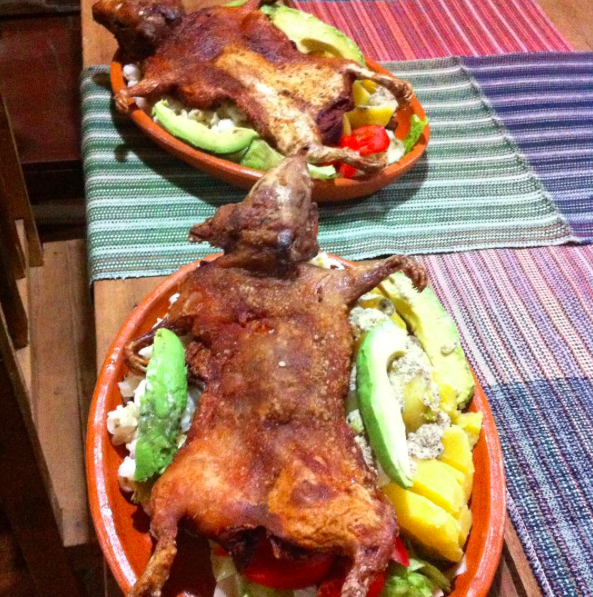
Photo courtesy of @thegoldenmomo on Instagram
Cuy, or guinea pig, is a really popular staple in rural places in Peru. The animal originated in the Andes, and was worshipped by many such as the Moche civilization in 100 A.D. It can be found in many places in the Peruvian highlands.
In several restaurants in Cusco, the “base” city for trips to Machu Picchu, guinea pig is served whole – head and everything! A restaurant completely devoted to the animal is La Casona del Cuy, serving crispy, tender guinea pig in a home-style center. To pay additional tribute to cuy, visit the Cusco Cathedral, which has a Last Supper painting where everyone is eating, you guessed it, guinea pig.
2. Relax and adjust to the altitude with native coca tea

Photo by Megha Srivastava
Pretty much every hotel and tourist service in the Peruvian highlands offers Coca Tea, an herbal tea infusion from the raw leaves of the infamous coca plant, native to South America. Supposedly, Coca Tea helps prevent altitude sickness, a serious problem many travelers face when trekking around the country.
The flavor is quite mild, and honestly just tastes like hot leaves. But after the headaches and weariness of traveling and hiking at elevations up to 20,000 feet, it’s nice to relax on a couch watching the clouds float past the majestic Andes while warming up to tea. Be careful not to bring it back, though – it’s illegal in the U.S.!
3. Combine two guilty pleasures with chocolate pisco
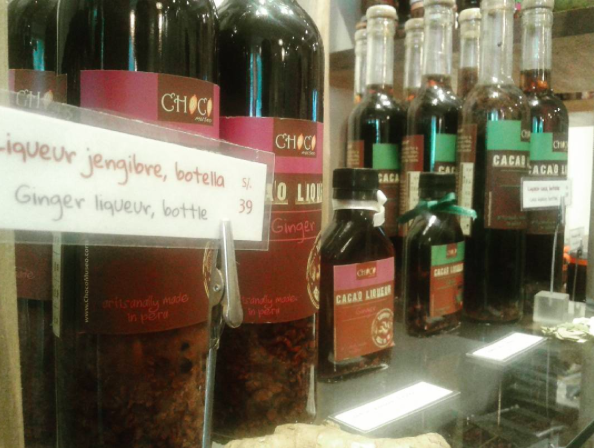
Photo courtesy of @makirijiya on Instagram
Pisco is a brandy that Peruvians and Chileans love to fight over who makes the better version. Pisco Sour cocktails were served at pretty much every restaurant we went to, and the drink is clearly an important part of Peruvian culture. However, everything tastes better with chocolate, even pisco, so behold the chocolate pisco.
ChocoMuseo, or the Chocolate Museum in Cusco, Peru, is a chocolate wonderland. Filled with fascinating history and science of the cocoa bean, the museum also has a gift store where you can taste delicious Peruvian chocolate. However, in addition to having truffles such as Aji chili, chocolate, dark chocolate, and cardamom, the museum had a variety of pisco liqueurs that were chocolate-flavored. Our favorite was the Aji chili pepper flavored chocolate pisco – a perfect combination of spiciness, strength, and divine sweetness.
4. Actually enjoy quinoa
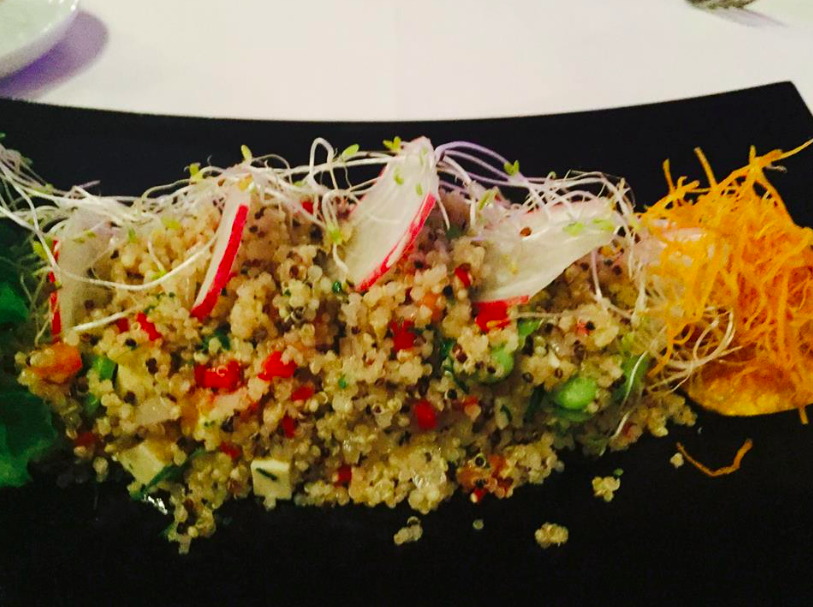
Photo by Megha Srivastava
Before Peru, I absolutely detested quinoa. Scarred from the bland preparations of my dining hall and the insane health-food craze of my hometown of LA, my two biggest rules as a foodie were: 1. No kale, and 2. No quinoa.
This completely changed when I visited Peru, because instead of treating quinoa as a substitute for really yummy carbs, the dishes I tasted embraced the nutty flavor and texture of quinoa. Quinoa with peppers and delicious quinoa-based tabouli salad definitely started to convince me.
5. Dig in to Parmesan scallops in Miraflores
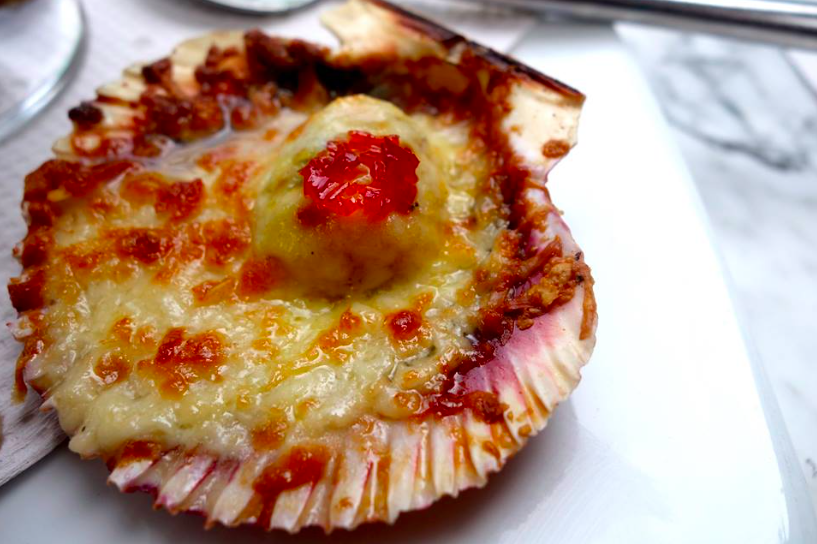
Photo by Megha Srivastava
Scallops have long been one of my favorite foods. From their subtle flavor in Pacific Rim cooking to their meaty texture when grilled and wrapped with bacon, scallops are incredibly versatile. Peru offers the most heavenly way of preparing scallops: juicy and smothered with parmesan cheese.
Called conchitas a la Parmesana, the dish removes any “fish” aroma by transforming the scallops into dollops of cheese and butter, sometimes adding a splash of pisco. Wherever we went, conchitas a la Parmesana was presented beautifully, with each scallop snuggled into a sea-shell. Miraflores, the tourist district of Lima by the ocean, has many quaint cafes and lunch places to bask in the sunshine and enjoy some comfort seafood.
6. Walk around Pisac sampling empanadas
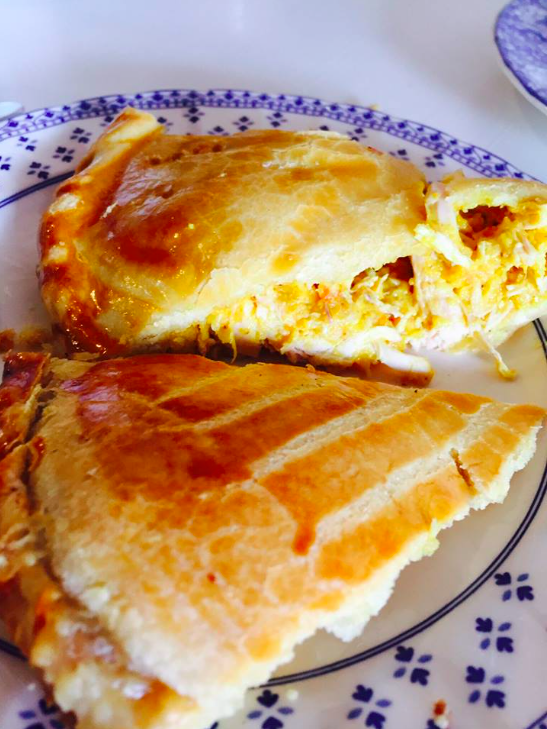
Photo by Megha Srivastava
Empanadas, the delicious savory-stuffed pastries found in many places in Latin America, Spain, and Portugal, are found in many places in Peru. They are often crescent-shaped, and in Peru, most empanadas I found were filled with raisins, ground beef, or aji-chili cheese. (Fun fact: Historians believe empanadas came from the Indian samosa that spread to Portugal and then to Spain and its colonies, which is a really cool example of how food captures our world’s history).
By far, the best empanadas I had were freshly made from a tiny café in Pisac, a village in Peru’s Sacred Valley. A kind woman folded the dough and placed them in a tray on top of an open-fire immediately after I ordered my cheese and mushroom empanada. The mouthwatering smell wafting through the bright pink and purple colored streets of Pisac is a permanent memory.
7. Forget about Big Macs while eating alpaca burgers
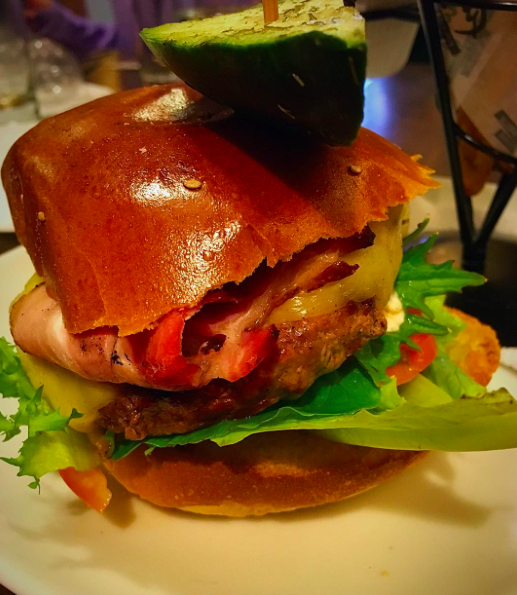
Photo courtesy of @grisisthenewblack on Instagram
Alpacas are related to llamas and the camel, and are the most adorable animal ever (in my opinion). Alpaca fleece is a really common item to buy in Peru, and at major tourist destinations you are bound to find people selling ponchos, sweaters, scarves, and shawls made from the incredibly soft alpaca wool.
However, alpaca also popped up on menus in the different places we ate through Peru. Alpaca meat is quite lean, and tastes kind of like lamb or goat. The most common way of preparation we saw was as a burger. You can find it in one of the many casual restaurants in Aguas Calientes, the quaint town near Machu Picchu, to re-gain all those calories you lost hiking Inca Ruins.
8. Dig around for different kinds of potatoes
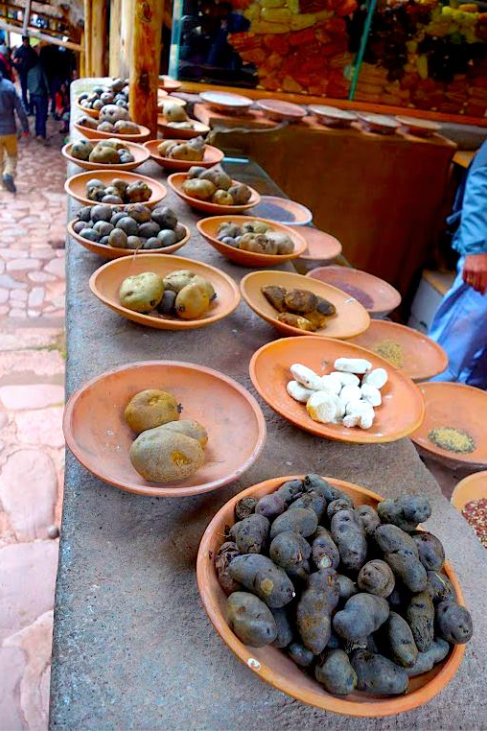
Photo by Megha Srivastava
According to the International Potato Center (yes, that’s a thing), Peru has around 4,000 different varieties of potatoes. In fact, it’s believed that the first potato was domesticated in Peru. Variety ranges from the sweet orange Camote to the delicious blue Papa Purpura to the rose-colored Papa Canchan.
One of the best places to see farmers and the vast variety of potatoes, that can even grow in the high Andes, is Lake Titicaca. Not only were the oldest archaeological findings of the potato found here, but it is famous for its “floating islands,” artificial islands made from reeds where people native to the area live. The islands offer a great way to better understand the potato’s history and vast variety.
9. Delight in the sweet world of Amazonian fruits
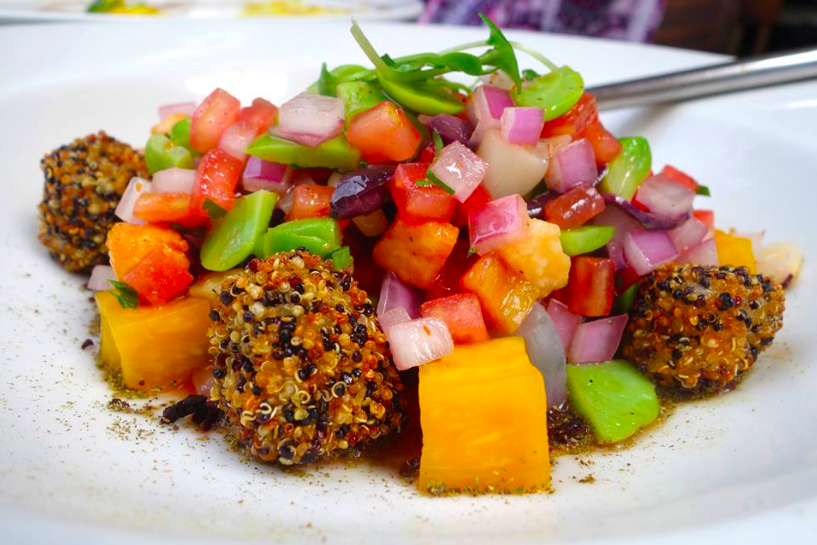
Photo by Megha Srivastava
Growing up in an Indian household, I was exposed to a variety of Hindi names of exotic fruits that simply didn’t exist in English. My parents would often try to find certain fruits they remembered from their childhood, but alas, the U.S. simply has a different variety of fruit.
What makes Peru so special is that it shares many of its tropical and high-altitude fruits with India. Gooseberries and custard-apples that were so hard for my parents to find suddenly appeared everywhere, bringing back warm memories of juicy, sweet fruits from rainforests. Make sure to try the extremely acidic Camu Camu, the Lucuma (nicknamed “The Last Gold of the Incas”) and Pepino, which tastes like sweet melons and cucumber.
10. Relax with ceviche by the beach
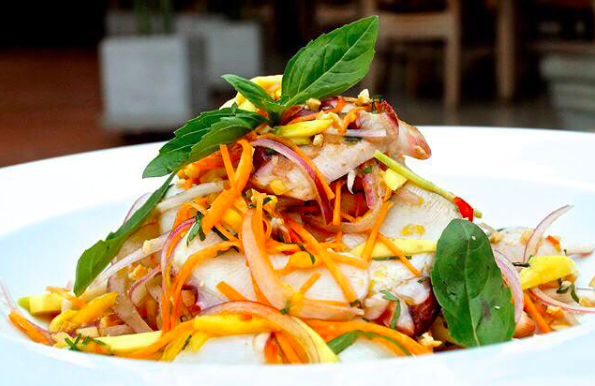
Photo courtesy of @pescadoscapitales on Instagram
Ceviche, raw fish marinated in citrus and spiced with peppers, is an immensely popular dish that originated in Peru. Some places, like Trujillo, traditionally use shark in their ceviche, and the Japanese immigrant population in Peru has also influenced ceviche preparation to be similar to sashimi. There are so many varieties of ceviche, and the coast of Lima is lined with many restaurants serving the dish, which even has a holiday in its honor.
One way to experience the varieties and modern-twists of ceviche is to eat at Pescados Capitales in Lima, a laid-blacked restaurant with an exciting menu inspired by human sins and virtues. For example, “Patience: Ceviche Gandhi,” combines Indian curry spices and mango chutney with prawns, and “Freudian Lust” offers delightful squid. It’s incredibly trendy, and a great way to put a modern spin on one of the many traditional items found in the glorious cuisine from the “Land of the Incas.”


